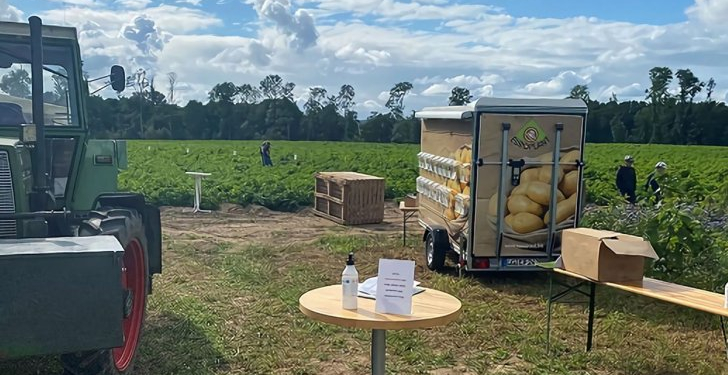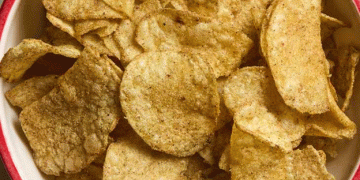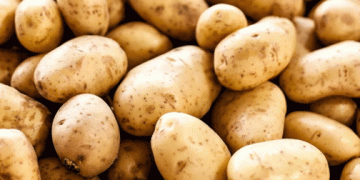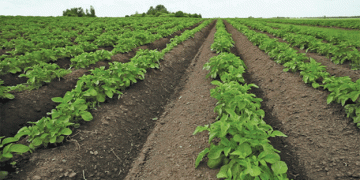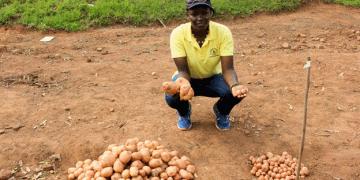After one and a half years without potato events, it was time to meet up again. Thirty-four potato growers took the opportunity, after prior registration, to discuss potatoes, exchange information about the potato market and simply make small talk again.
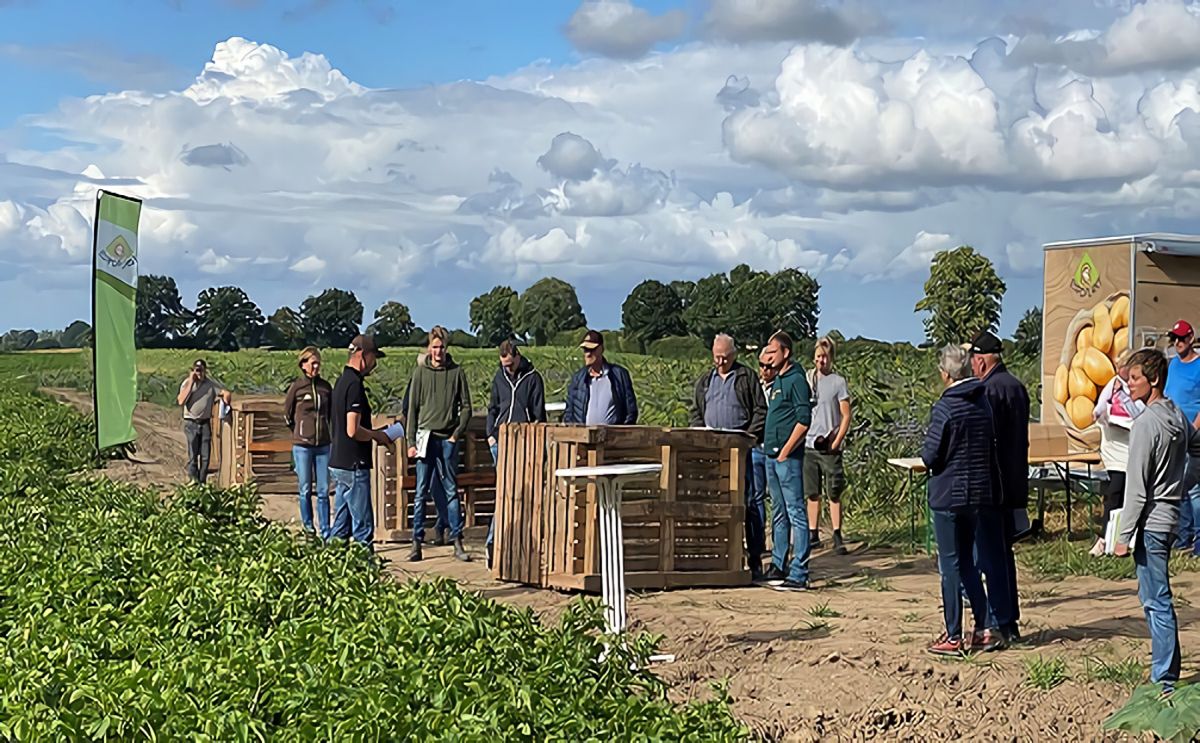
The first Europlant Variety Presentation at Gut Schirnau located in the heart-of Schleswig Holstein on the Kiel canalEckhard Simon Cultivation Consultant at EUROPLANT Pflanzenzucht Ltd:
“At Gut Schirnau with the Fedder family, we found a great location to hold a field day for our potato growers in Schleswig-Holstein.”
Ulf Hofferbert Consulting Manager at EUROPLANT Pflanzenzucht Ltd:
“The chances for a stable price in the coming season are not bad.”
At the end of the early potato season, prices are still well above last year’s level. Uncertainties about the weather, smaller crops and reduced acreages in Germany as well as Western Europe give optimists hope for a better year than 2020. Framed by flowering strips, 13 potato varieties could be shown from their best side that evening.
Suitable for the North German taste, deep yellow, firm cooking and easy to peel, the very early Glorietta presented itself. Corinna, which is particularly suitable for washing and packing, is available as a follow-up variety with a stable shape and visually perfect, light, smooth skin.
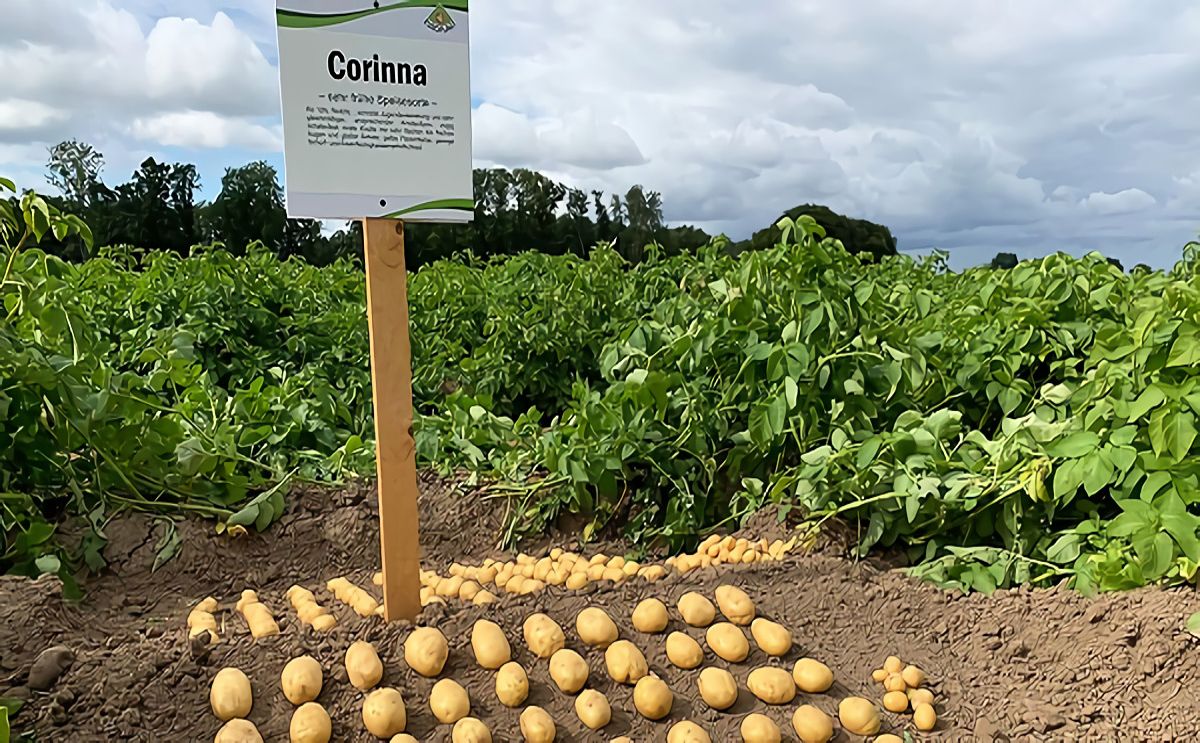
Corinna Potato Variety at a the variety presentation in SchleswigAs dry, hot summers are becoming more frequent in the north as well, varieties such as Berninab are of interest, as these are particularly insensitive to heat and drought stress and are also deep yellow in color, firm in cooking and aromatic in taste.
It goes without saying that modern varieties have a high nitrogen-accepting capacity, so that fertilizer quantities can be significantly reduced while maintaining yields and good quality.
Another decisive factor is the very good resistance to the most important potato pathogens. For example, the floury potato Karelia, which is suitable for any location, has very high resistance to the cyst nematodes Rostochiensis and Pallida.
For consumers who consciously want to eat a low-carbohydrate diet, there is the Montana variety. It has a significantly lower carbohydrate content when grown appropriately and, if laboratory results confirm this low content, can be designated as a “lower carb” potato.
The Leyla, Belana, Laura and Allians varieties, which are firmly established in the market, were there as well, of course. Their advantages and disadvantages were discussed, tips and recommendations for cultivation were exchanged.
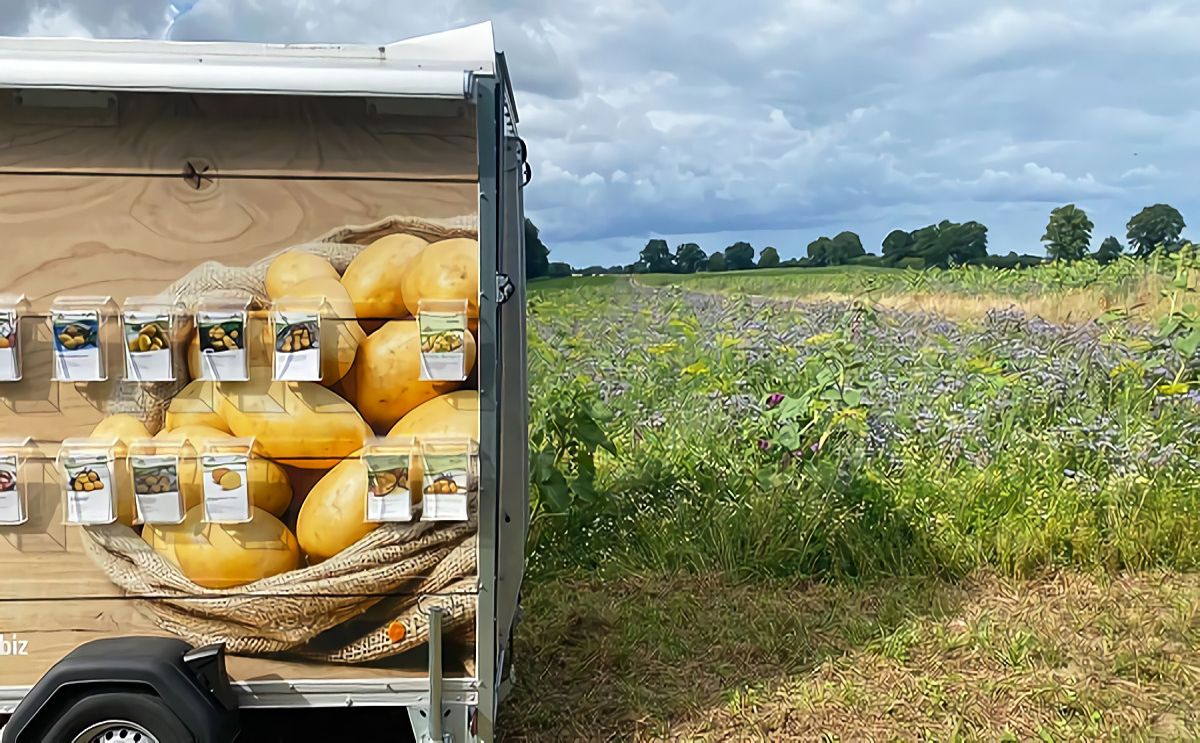
Information on the different potato varieties in Schleswig
